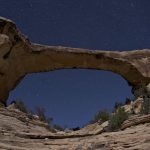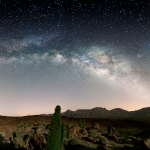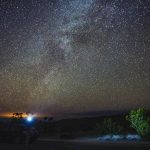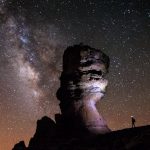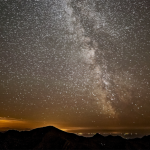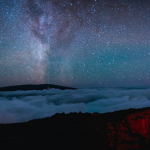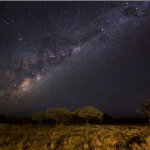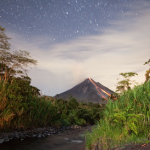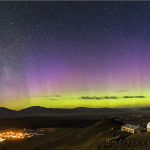12 spots to stargaze


By Ali Sundermier From Business Insider
The night sky is an amazing thing. It’s like a map, showing us our place in this vast, ever-expanding universe. And it’s like a time machine, allowing us to see billions of years back in time — the amount of time it takes light from some of the most distant cosmic objects to reach us.
But when it comes to observing the night sky, not all places are equal. If you were to step out on the street in, say, New York City, you might be able to see a tiny speckling of stars across a hazy sky, at best.
There are a lot of factors that work together to create optimal stargazing conditions. The higher the altitude of a site, the drier the air, and the further it is from the light pollution of cities, the more stars you can see in the night sky.
If you’re ever in the mood for a night of stargazing (and have access to a jet plane), here are a few spots you should check out.
IMAGES:
A view of the night sky in Tenerife in the Canary Islands. Carl Jones
The NamibRand Nature Reserve in Namibia was the first reserve to achieve Gold Tier dark-sky status from the International Dark-Sky Association, which means its sky quality is ideal for stargazing.
Bobby Bradley
Kruger National Park in South Africa, the largest game reserve in South Africa, is far from pollution and artificial lights of towns and cities.
Martijn Barendse
The summit of Mauna Kea in Hawaii is nearly 14,000 feet. It’s so high that as you climb the mountain you rise above the clouds. If you can power through the cold and the altitude sickness, you’ll be rewarded with a clear view of the Milky Way.
sjhags/Flickr
Tenerife, in the Canary Islands, has some of the clearest, darkest skies in the world because of its high altitude, its closeness to the equator, and its safe distance from tropical storms.
Raico Bernardino Rosenberg Follow
The Atacama Desert in Chile is one of the driest places on Earth, receiving less than a millimeter of rain each year. The desert has some of the most ideal conditions for stargazing. It has a high altitude, clear skies, and virtually no light pollution.
European Southern Observatory
The Aoraki Mackenzie International Dark Sky Reserve, the world’s largest dark-sky reserve, sits on top of a plateau in New Zealand. From this reserve, you can see a duo of dwarf galaxies called the Magellanic clouds.
Joel Gillespie/Earth&Sky LTD
La Fortuna in Costa Rica is home to the Arenal Volcano, one of the most active volcanoes in the world. It is also one of the few places north of the equator that you can see the Magellanic clouds.
Frank Kehren
The Chaco Culture National Historic Park in New Mexico offers extremely dark, clear skies and a high elevation.
John Fowler
The Natural Bridges National Monument in Utah was the first international dark-sky park in the world. You can see up to 15,000 stars in just one night.
DennyMont
Snowdonia in Wales is prime dark sky real estate and it is in the process of getting Dark Skies Status, which would protect the area from light pollution.
Malcom Davies
Other than Hawaii and Alaska, Big Bend National Park in Texas is said to have the least light pollution of any other national park. You can see about 2,000 stars with your naked eye.
Vincent Lock
With your naked eye, you can see more than 7,000 stars and planets at the Scottish Dark Sky Observatory in Galloway Forest Park in Scotland.
David Warrington
For more on this story go to:


